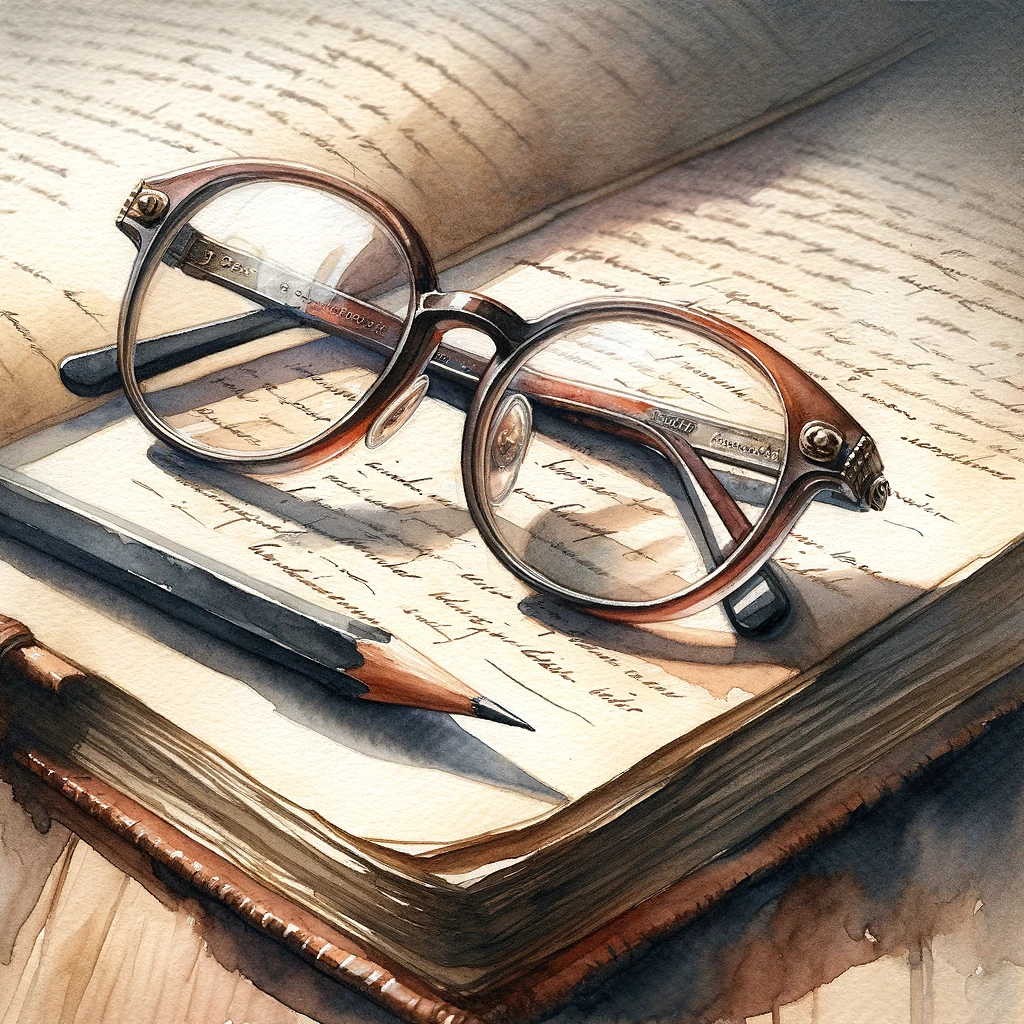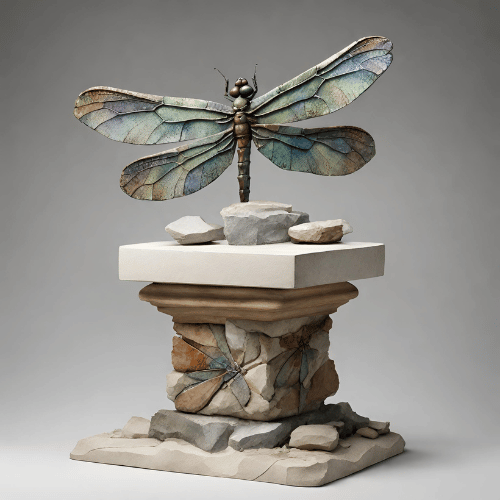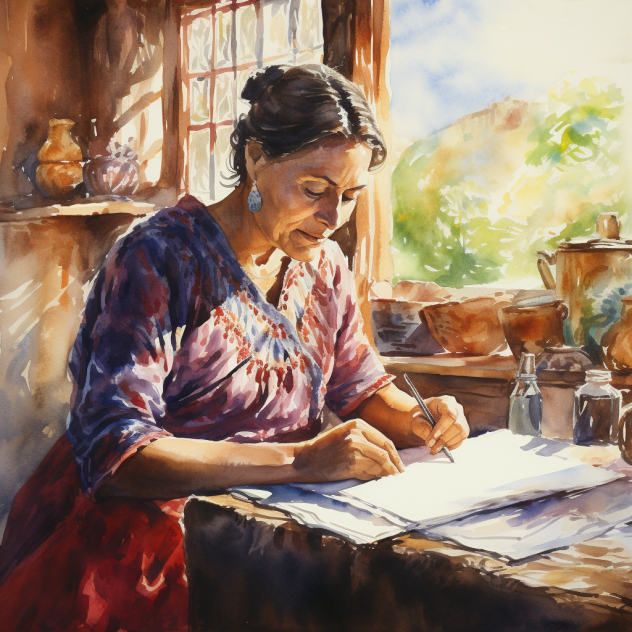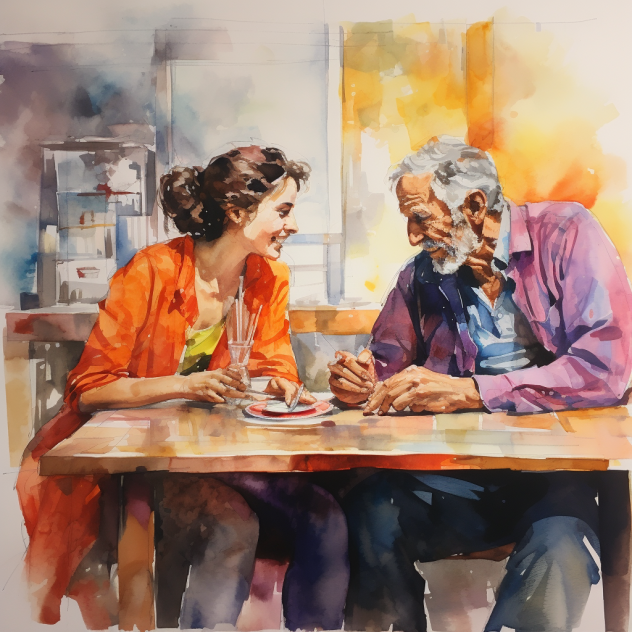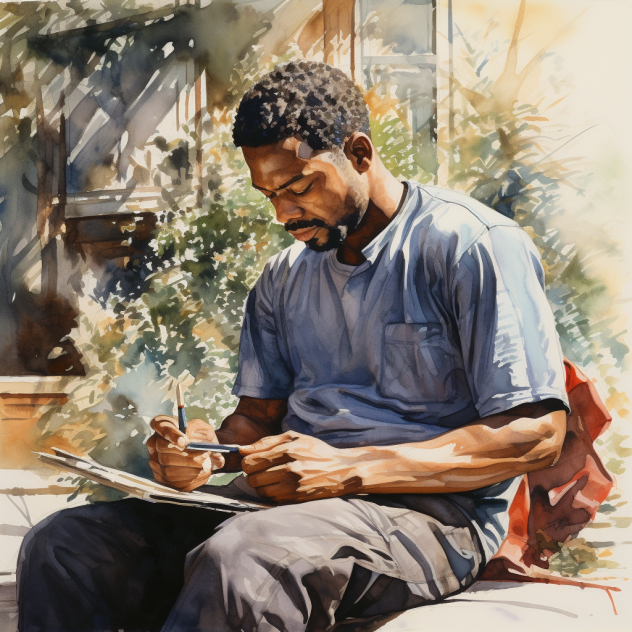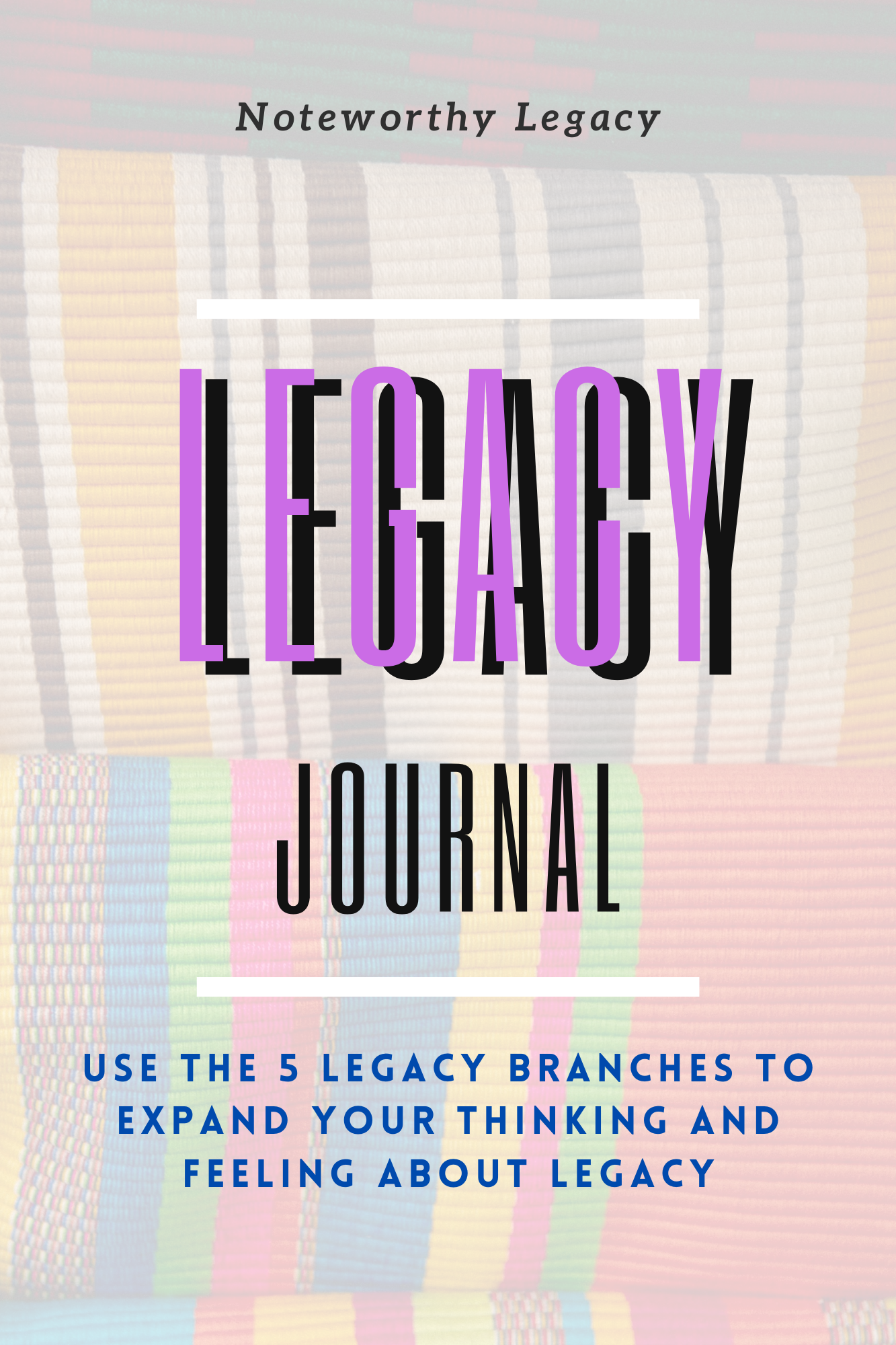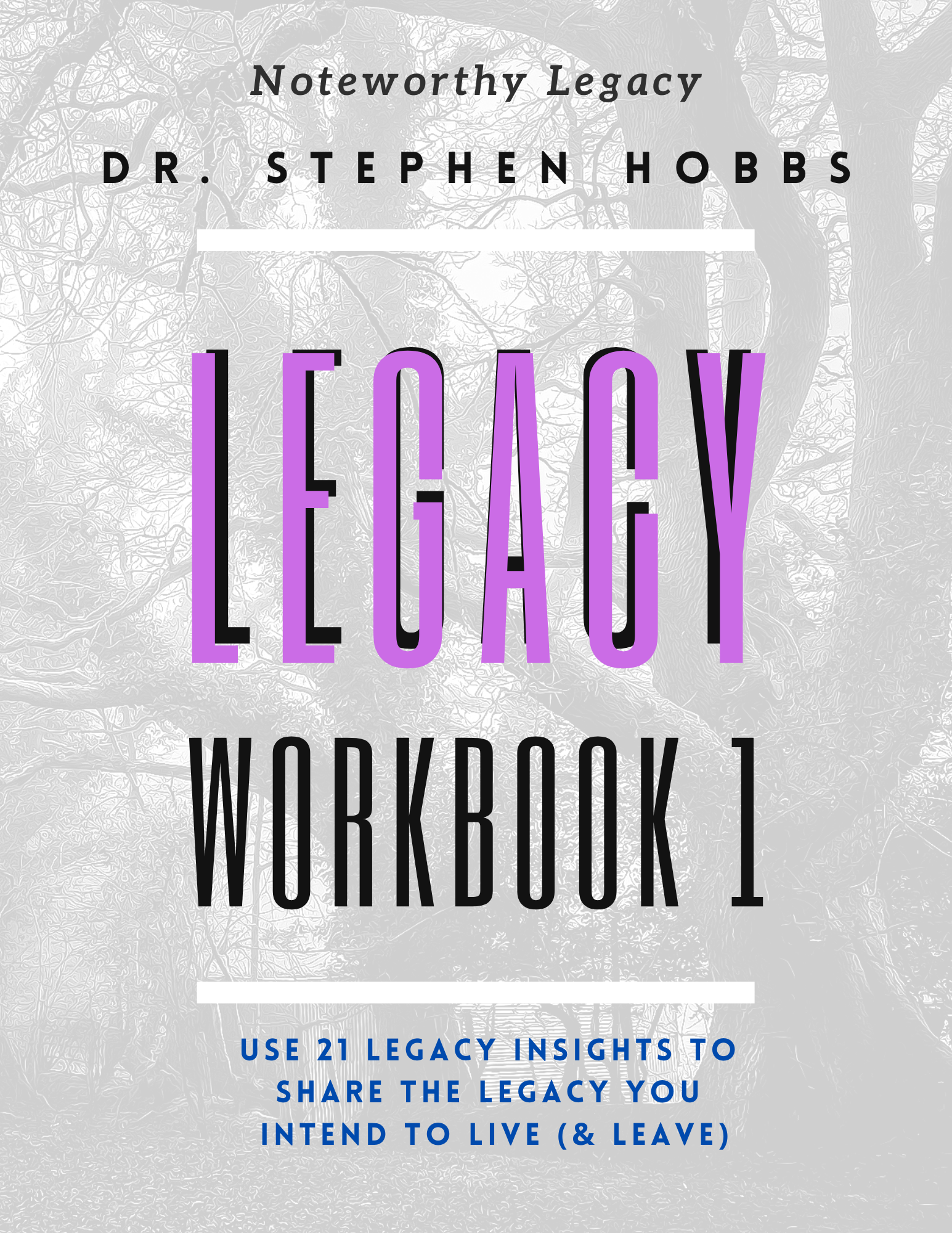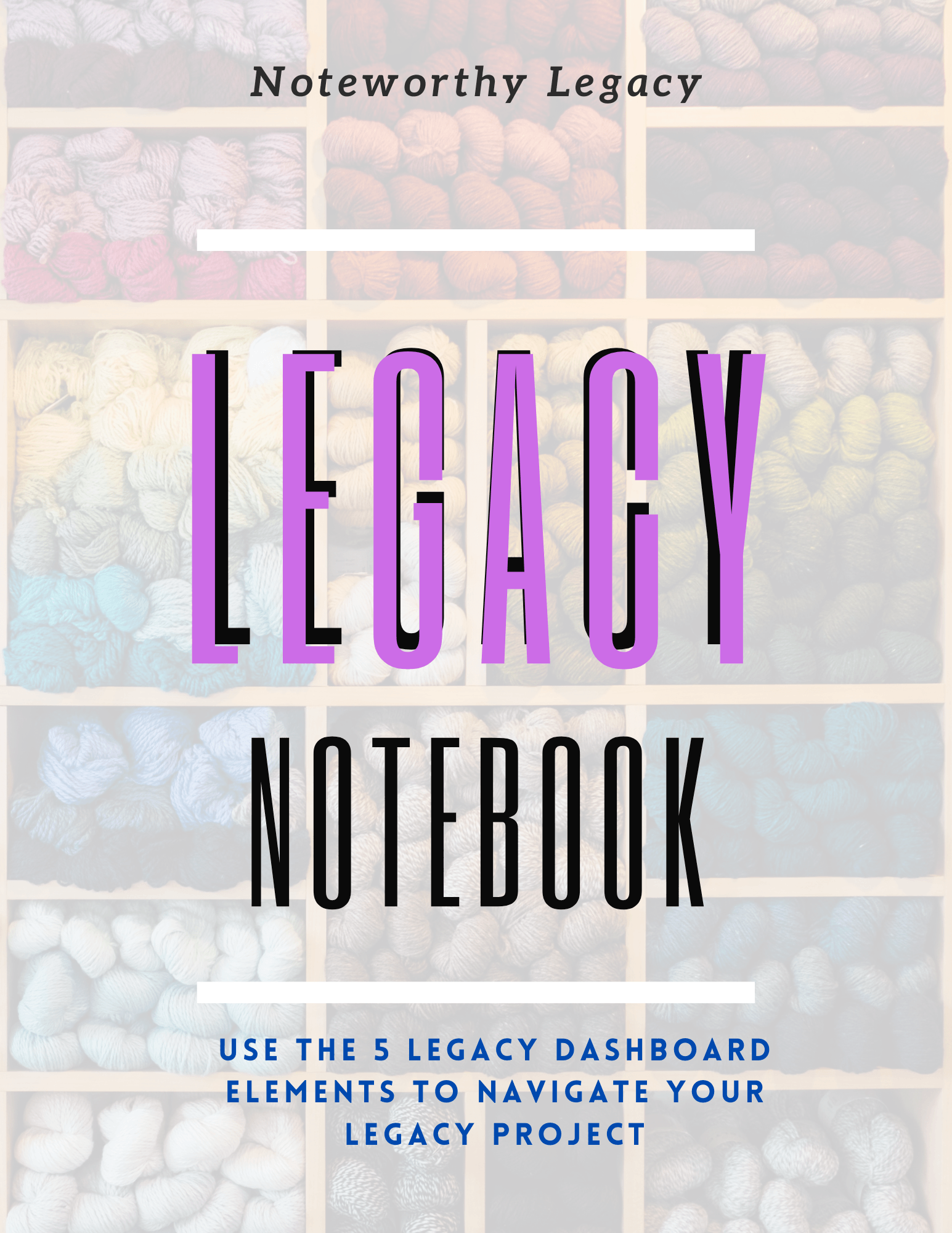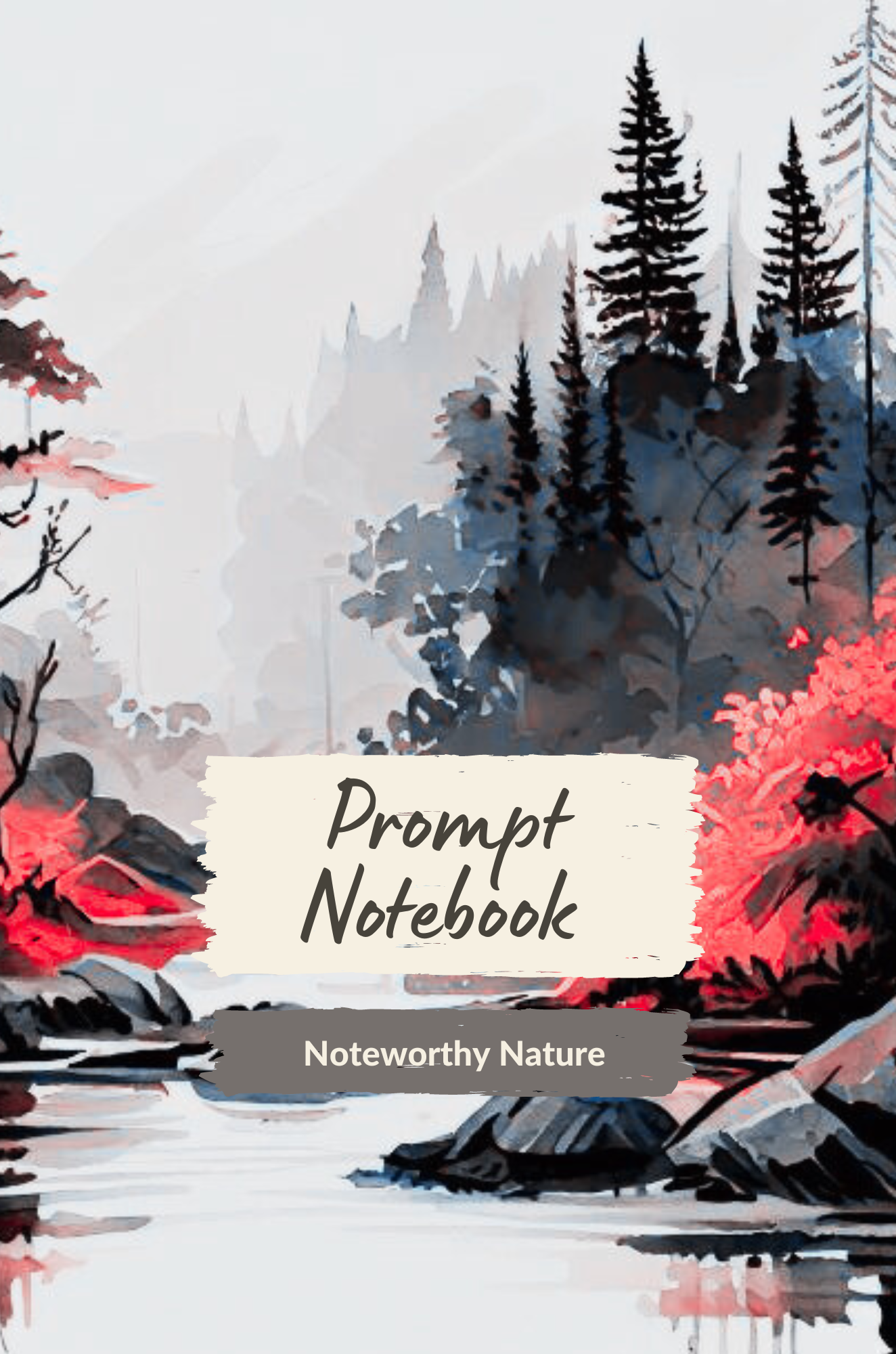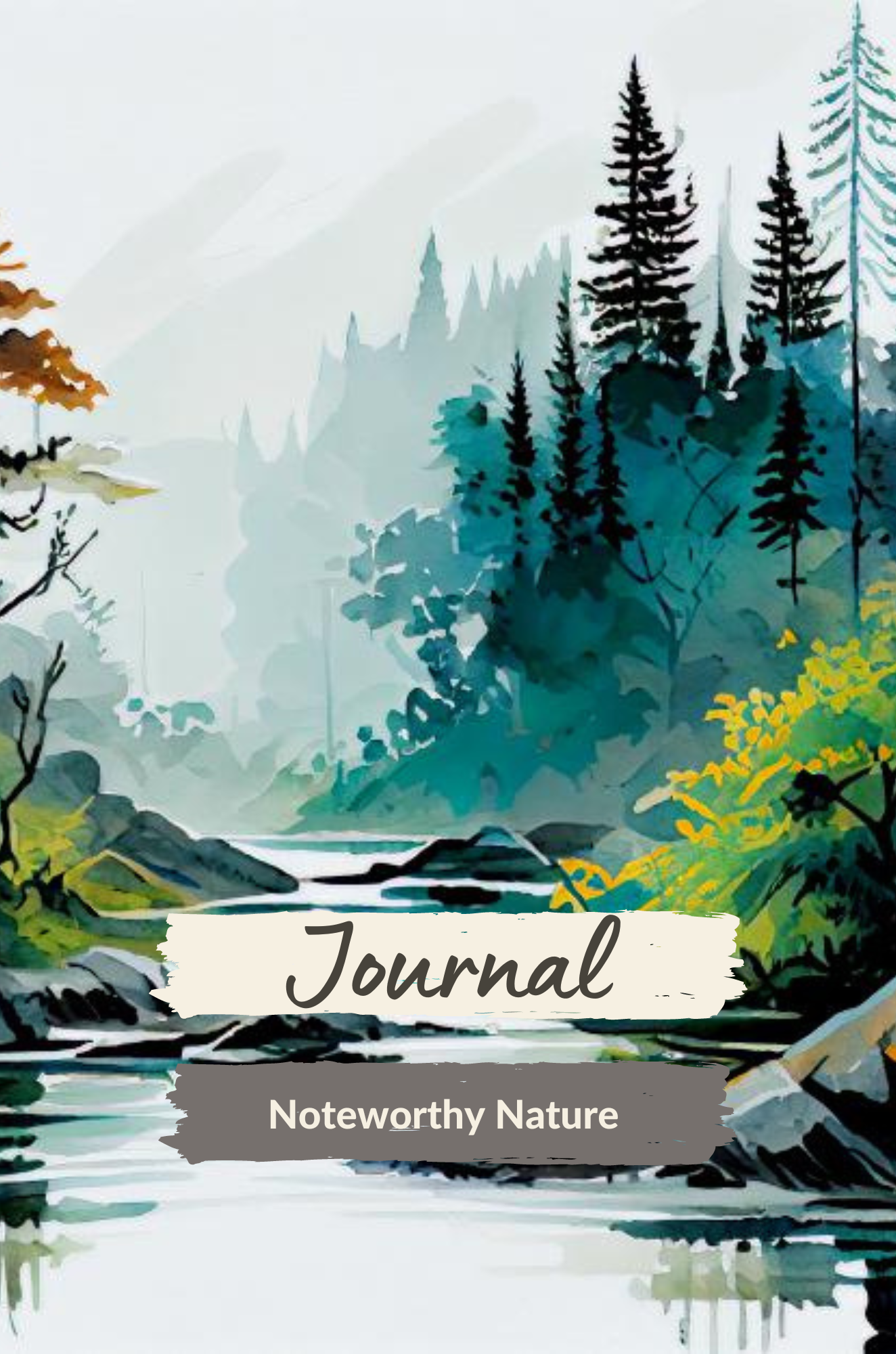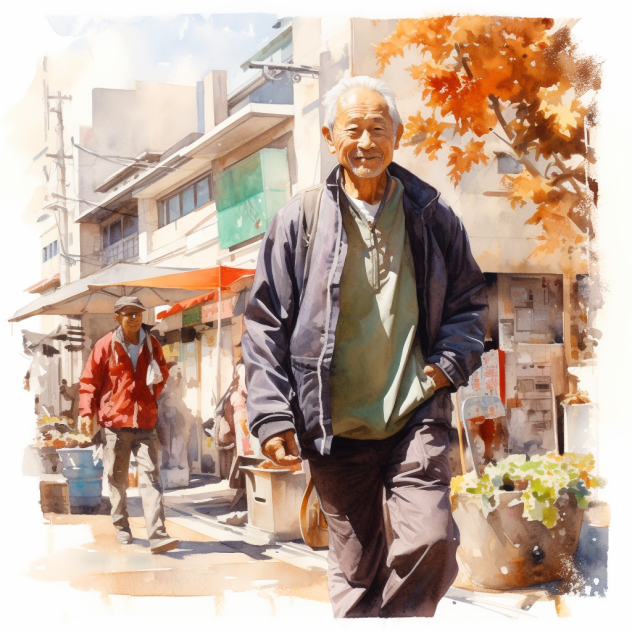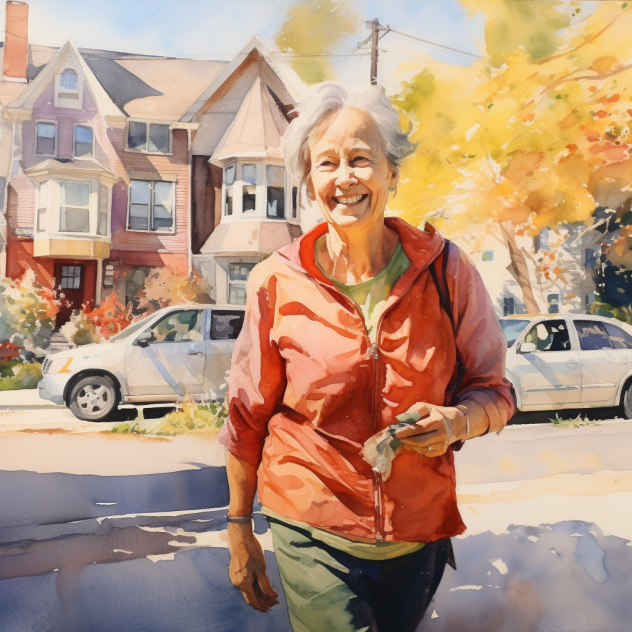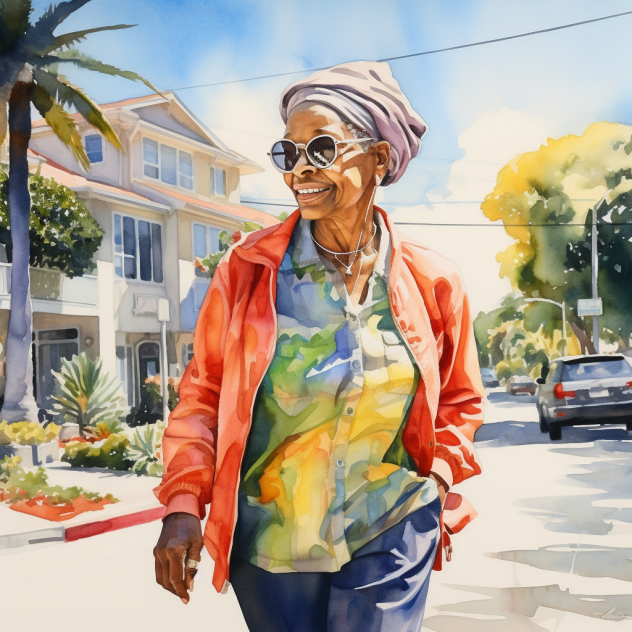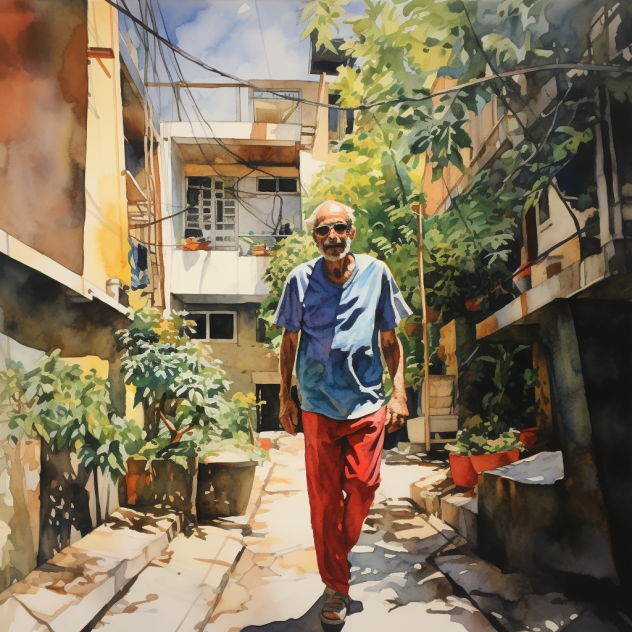Saturday Legacy Stories from Solace Grove #9
Where Mountains Meet Community, and Every Story Matters
Two Brothers, One Forest: A Tribute to Rashid
As told by Ahmed Mahmoid, crossing guard and keeper of memories, to two high school online newsletter columnists. They completed the interview with voice recordings and with the help of AI they brushed up the GUM and made sure the threads to strings to cords wove together into his story:
People think being a crossing guard is simple work. Hold up a stop sign, help children cross safely, repeat for thirty years. They don't see the real job – watching over a community's most precious cargo while the world changes around you, one school day at a time.
For 30 years, I wasn't doing my jobs alone. My brother, Rashid, stood beside me always, in every way, in every plant we discovered, every photograph we captured, and every young explorer we guided through Solace Grove's wild places.
Two years ago, Rashid returned home to Syria to share his engineering expertise with villages rebuilding after the war. He left behind his half of our plant identification books, his camera equipment, and me (with the hint of a frown). I suddenly understood what "solo-ager" means in a way I never wanted to learn.
The Engineering Heart of a Botanist
Rashid arrived in Solace Grove thirty-two years ago with the precision of an engineer and the soul of a poet. I followed him two years later, younger and louder and convinced that my big brother could solve any problem with the correct calculations and enough determination.
For three decades, we worked in what the employment office referred to as "infrastructure maintenance" in the hospitality industry. Rashid loved this description because it sounded official and vital. We kept mountain resorts running – fixing heating systems when winter storms knocked out power, maintaining water systems when spring floods threatened to undermine foundations, and solving mechanical mysteries that left other people scratching their heads.
"Infrastructure," Rashid would say in his careful English, "is like the roots of a tree. No one sees it, yet without it, nothing else survives."
He approached plants the same way he approached broken boiler systems – with methodical observation, careful documentation, and infinite patience. Where I saw a pretty wildflower, Rashid saw botanical architecture. He could identify a plant by its leaf structure, explain why it grew in specific soil conditions, and predict which insects would visit its flowers.
The Camera that Changed Everything
Rashid bought his first serious camera in 1998, a decision that transformed our weekend hiking from casual exercise into a scientific expedition. He insisted on photographing every plant we encountered, creating what he called "visual documentation of Solace Grove's botanical citizenship."
I teased him mercilessly about this obsession until I realized something magical was happening. Our photographs weren't just pretty pictures – they were becoming a comprehensive record of mountain plant life that didn't exist anywhere else. And I was becoming an amateur botanist!
The high school librarian, Rosa, approached us five years ago with a proposal. Would we consider creating a plant identification guide for students using our photographs? The idea thrilled Rashid. Ultimately, his engineering precision and botanical interests could serve the community effectively.
We spent two years organizing hundreds of photographs into seasonal categories, writing descriptions that balanced scientific accuracy with accessible language, and creating maps showing where each plant could be found around Solace Grove.
"Young people learn better with pictures than with words," Rashid observed, reviewing our draft pages. "Pictures speak every language."
Teaching the Next Generation
The plant identification books – we ended up with three volumes covering wildflowers, herbs, and medicinal plants – became more popular than we ever imagined. Students borrowed them constantly. Teachers integrated them into science lessons. Parents used them for family nature walks.
More importantly, children started approaching me during school crossings with questions about plants they'd discovered. I was delighted, as I know Rashid would have been. When we attend events with our books, he would crouch down to the childrens’ level, listening carefully to their descriptions, then suggest where they might find similar plants or what to observe next.
"Ahmed," he would tell me after particularly enthusiastic young botanists had moved on, "we are planting seeds of curiosity. These children will become better stewards of this land than we ever were."
He was correct, of course. Rashid was almost always spot on about people.
The Fair That Honored Youth
Our photographs won categories at the Fall Fair for eight consecutive years – including landscape, macro, and nature series, among others. Every year, we would politely ask not to be considered for the Photograph of the Year, the fair's highest honour.
Instead, we requested that the award go to the other townspeople, especially the youth who accompanied us on plant-hunting expeditions. Over the years, fifteen teenagers received that recognition, proudly displaying their nature photographs alongside ours in the community center display cases.
"Photography is just the tool," Rashid would explain to anyone who asked about our unusual request. "Teaching young eyes to see beauty and complexity in nature – that is the real art."
Emma Richardson, now studying environmental science at university, continues to send us photographs from her campus, along with detailed identification questions. Marcus Chen, who won Photograph of the Year at age sixteen, now leads nature walks for the tourism board. These connections matter more to us than any ribbon ever could.
Solo-Ager, Continuing the Work
When Rashid announced his decision to return to Syria, I completely understood his reasons. His engineering skills were in desperate demand in Syria. Villages were rebuilding water systems, restoring power grids, and creating infrastructure for sustainable futures. How could I argue with such important work?
Yet, understanding and accepting are different experiences entirely.
The first crossing guard shift after his departure felt hollow. No brother to share weekend plant discoveries with. No caring dialogue about proper identification techniques. No second set of eyes reviewing our photographic documentation.
I realized I had become what social workers call a "solo-ager" – someone growing older without nearby family support. At fifty-eight, this wasn't how I had imagined this stage of life unfolding.
Expanding the Legacy
Grief and purpose often travel together, I've discovered. Missing Rashid motivated me to continue our botanical documentation project with renewed energy. The plant identification books needed updating. New species were appearing as climate patterns shifted. Seasonal timing was changing in ways worth recording.
I've added tree and shrub volumes to our collection, incorporating traditional Middle Eastern knowledge of edible and medicinal plants that my grandmother taught us as children. Syrian immigrants aren't common in Solace Grove, yet the plant wisdom from our homeland often applies to similar species growing in these mountains.
Children still approach me during crossings with botanical questions. Now I photograph their discoveries and include them in our expanded documentation. Their enthusiasm helps fill the brother-shaped space in my daily routine.
This Year's Tribute
For this fall's fair, I'm organizing something special – a comprehensive display of all our plant identification work, featuring Rashid's original photographs alongside new documentation I've gathered since his departure. Rosa is helping coordinate the exhibit in the high school library, where community members can browse our complete collection.
The display will honour Rashid's contribution to our community's understanding of local flora while showing how citizen science projects can preserve traditional knowledge and inspire future generations. Several former student photographers are contributing their work to demonstrate the continuing impact of our botanical education efforts.
More importantly, this exhibit represents the community's way of thanking Rashid for sixteen years of patient teaching and careful documentation. His engineering precision created resources that will serve Solace Grove students for decades.
Lessons from a Brother
Rashid taught me that legacy isn't about being remembered – it's about leaving practical gifts for people who come after you. Our plant identification books serve students we'll never meet. Photographs we captured years ago still help families identify edible berries or medicinal herbs.
He also taught me that curiosity is contagious. When adults demonstrate genuine interest in the natural world, children catch that enthusiasm and carry it forward. This may be the most critical infrastructure maintenance work we have ever undertaken.
Now, standing at my crosswalk each morning, I watch for teaching moments between traffic cycles. A child notices unusual leaves. A parent asks about flowering plants. A teenager wants to contribute photographs to our growing collection.
Each interaction extends Rashid's legacy while creating my own.
The Continuing Story
Solo-aging doesn't mean lonely aging, I'm learning. Community connections replace family proximity when you invest in relationships that matter. Young botanists still seek my guidance. Fellow immigrants share plant knowledge from their homelands. Neighbours appreciate our documentation efforts.
Rashid calls monthly from Syria, eager to hear about new plant discoveries and student photographers. He's creating similar documentation projects in villages he's helping rebuild, adapting our Solace Grove methods to desert flora and different growing conditions.
"Ahmed," he told me during our last conversation, "we planted seeds of learning that are growing in places we never imagined."
He's right again, of course. Rashid usually is.
The plant identification books continue expanding. Student photographers keep contributing. The crossing guard position remains my happy place, where infrastructure maintenance means protecting both children's safety and their natural curiosity.
Two brothers, one forest, endless opportunities to share the wonder of growing things with growing minds.
The legacy continues, one photograph and one curious question at a time.
~~/\~~
Visit the Rashid Mahmoid Botanical Documentation Display at this year's Fall Fair, September 15-17, in the high school library. We invite community members to contribute their plant photographs and identification questions to our ongoing collection.
Working with Claude (AI) and ChapGPT (AI) and other GUM tools availbale online.
Please use this Form to receive email updates on a Full Moon date.
Also, you can ask questions - share a comment - pass along a funny.
We will use your email for Living Legacy Life communication ONLY!
July 10 2025 FULL Moon Edition of the Solace Grove Magazine 11
Saturday Legacy Stories from Solace Grove #9AWhere Mountains Meet Community, and Every
Saturday Legacy Stories from Solace Grove #10 Where Mountains Meet Community, and Every
Saturday Legacy Stories from Solace Grove #9AWhere Mountains Meet Community, and Every
June 25, 2025 New Moon Edition of the Solace Grove Magazine 8Where
Saturday Legacy Stories from Solace Grove #7AWhere Mountains Meet Community, and Every


